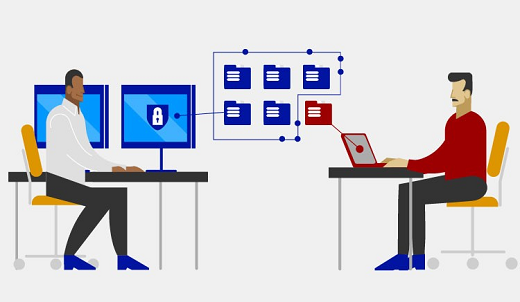EDR TECHNOLOGY IS THE FUTURE OF ENDPOINT SECURITY
With more employees and businesses now able to work from home and do business on mobile devices and endpoints, vulnerable data is now more at risk from malicious attacks. The increasing sophistication of hackers and cyber attackers now requires an equally sophisticated cybersecurity solution such as Endpoint Detection Response (EDR) technology.
On that point, endpoint security has been more important and relevant than ever. Its evolution from protecting standard PCs to securing business hardware with a multilayered software infrastructure has now come a long way. According to Verizon's 2020 Data Breach Investigations Report (DBIR), 70% of breaches are done by external actors which makes endpoint security the smart thing to do.
There are many options of cybersecurity available in the market but EDR technology stands out holding a spot in the future of endpoint security.
What is EDR Technology?
EDR stands for endpoint detection and response. EDR technology is the term coined in 2013 to categorize a set of security tools aimed at the detection of skeptical activities on endpoints and appropriate response to them.
The capabilities that EDR technology can offer can differ. This is because some offer more analysis of potential threats while others vary in their ability to merge with threat intelligence providers. However, EDR tools all perform necessary functions that serve the same purpose which is to provide a method for constant monitoring and analysis to better respond to advanced threats.

The rise of EDR technology capabilities is driven by the increasing number of endpoints linked to a network. More endpoints mean your data, network, and systems are more vulnerable to hackers justifying the need for more capable endpoint security.
EDR TECHNOLOGY AND THE FUTURE OF ENDPOINT SECURITY
Endpoint security could soon go lightweight because the towering goal of strengthening the digital perimeter alone is no longer feasible in the current threat landscape. This could mean that endpoint security tools should focus more on detection and response rather than putting most of the effort into prevention.
EDR technology boasts itself on its ability to detect potential threats through its threat intelligence database done through behavioral analysis. It is capable of analyzing and collecting information based on what the end user's normal activities look like. This capability allows for higher endpoint visibility because IT teams can identify unexpected behavioral tactics from cyberattackers early on.
CONTINUOUS MONITORING
Obtaining endpoint security that is focused on monitoring is one smart way to keep an eye on the more fluid sections of your network. Since it gives you better visibility of your endpoints, monitoring also paves the way for further analysis and better response to future potential threats.
This is where EDR technology comes in because its primary function is to monitor activity data from endpoints that could suggest a threat.
DETECTION-BASED MODEL.
A recurring theme in the constant innovation of cybersecurity and endpoint security for that matter is that there is a shift from prevention-based solutions to detection-based models. Security solutions providers and clients alike are now coping with the fact that no matter how much preventative software they use, some advanced and more sophisticated malware might still penetrate networks.
The next-generation endpoint security systems such as the EDR technology are now adapting to a detection-based framework besides a preventive solution to better deal with malware and suspicious files.
COMPLEMENTS OTHER EDR SOLUTIONS
When it comes to endpoint security, there is no catch-all measure. Coming to terms with this fact and adapting to emerging trends on endpoint security will help you transition to deal with the threat advancements coming along the way.
EDR technology does not replace other security solutions but it works in tandem with them. EDR improves the endpoint protection that can be provided to your network and does not jettison the need for other security solutions. Along with other endpoint security systems you already have, adding an EDR tool to your security capabilities will bolster your available endpoint protection.
THE FUTURE OF (Endpoint Detection and Response) EDR TECHNOLOGY WITH XCITIUM
No single security solution will be enough to manage advanced threats that could harm your network. However, if there is an available solution that could at least ease the burden and help protect your system, why would you say no to that?
Conclusion
EDR stands for endpoint detection and response. Xcitum's EDR technology goes beyond what is expected of a simple EDR solution. From incident investigations to file-less malware detection, our EDR technology is prepared to protect you even on an enterprise level.

